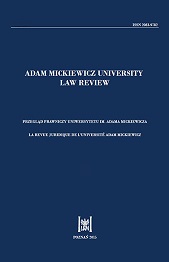The Use of the “Dry Submarine” Technique and Other Allegations in Proceedings Before the United Nations Committee on Enforced Disappearaances. Remarks on the Yrusta v. Argentina case no. 1/2013
The Use of the “Dry Submarine” Technique and Other Allegations in Proceedings Before the United Nations Committee on Enforced Disappearaances. Remarks on the Yrusta v. Argentina case no. 1/2013
Author(s): Katarzyna ŁasakSubject(s): International Law, Human Rights and Humanitarian Law
Published by: Uniwersytet Adama Mickiewicza
Keywords: human rights law; United Nations Committee on Enforced Disappearances; Yrusta v. Argentina Case no. 1/2013;
Summary/Abstract: The prohibition on enforced disappearances is one of the fundamental norms of contemporary international law which is intended to protect the individual from state repression. Under certain circumstances, a violation of the prohibition is recognized as a crime of international law. There are no exceptions to the implementation of the norm. Since the prohibition is a treaty, States must expressly agree to be bound by it. Not all States have done this, but some have, including Argentina. Despite this, Roberto Agustín Yrusta disappeared. His enforced disappearance was preceded by numerous and elaborate forms of evil, cruel and humiliating treatment. This paper seeks to answer the question of how international law can ensure effective enforcement of the prohibition on enforced disappearance.
Journal: Przegląd Prawniczy Uniwersytetu im. Adama Mickiewicza
- Issue Year: 2019
- Issue No: 9
- Page Range: 41-63
- Page Count: 23
- Language: English

